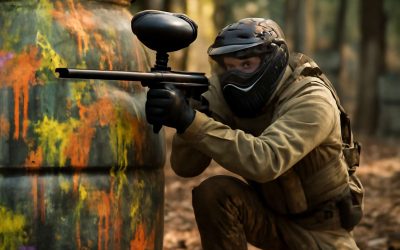A paintball marker is a gun which is used to fire a small plastic ball with an oil base called “paint.” Most paintball markers use compressed carbon dioxide (CO2) to operate and must be designed to be safe for users as young as 10 years old. They are designed to be easy-to-use and lightweight so that they can be easily carried by players and operated while they play, as well as incorporate a number of user safety features.
Markers are available in a variety of styles, types and price points to meet the needs of any player, from beginner to expert. Choosing the right marker depends on where you will play, the availability of air tanks and whether CO2 or Nitrogen is preferred. The type of paintball marker will also depend on how much power you want to be able to produce for your shots.
There are three basic types of paintball markers; Nelson valve, pump-action and semi-automatic mechanical markers. Nelson valve markers have a single tube which houses the bolt, hammer and sear. To shoot, a paintball is dropped into the breach of the marker where it hits the sear which then latches onto the bolt and fires it. A spring then resets the mechanism for the next shot.
Pump-action markers have a separate chamber for the barrel and chamber for the ball, with a trigger which is pulled to cycle the system. A reloading valve is built into the marker to refill the chambers with new balls and also to return the hammer to its ready position. These markers require more maintenance than other types of markers because they have a lot of moving parts.
The most common type of marker is the semi-automatic mechanical marker. Its barrel and trigger assembly is held together by a hinged foregrip which can be folded down to expose the loading port. The foregrip can be replaced with other types of foregrips to adapt to different playing environments and personal preferences. The marker can also be modified with various barrel backs and fronts to change the shooting performance.
All markers need some sort of way to store the paintballs which they will use to shoot their shots, and this is known as a loader. Loaders are available in a wide variety of designs from simple gravity-fed, to agitating and force feed hoppers. Some of these have a special feed tube to help reduce the size of the hopper and its weight, and may include a block or guard to prevent users from accidentally firing the marker when they don’t have their mask on.
The most important input to a paintball marker is the pressurized CO2. This must be converted to gas to operate the marker, and it is critical that the conversion takes place in an efficient manner. If the CO2 is not expanded at a fast rate, it can freeze inside the marker and cause it to malfunction or even explode.



0 Comments